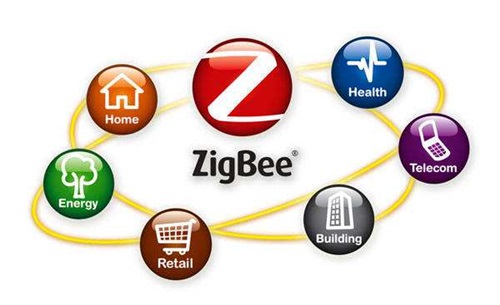

 咨询热线 15388025079
咨询热线 15388025079 时间:2022-03-13 13:49:05 浏览量:668
Advantages and disadvantages of zigbee protocol and main application areas of zigbee
ZigBee protocol meets the requirements of low cost, low energy and high fault tolerance of wireless sensors. ZigBee is a low-power LAN protocol based on the IEEE802.15.4 standard. But IEEE only deals with low-level MAC layer and physical layer protocols, so the Zigbee Alliance extends IEEE to standardize its network layer protocols and APIs. Zigbee is an emerging short-range, low-speed wireless network technology. Mainly used for short-range wireless connections. It has its own protocol standard that coordinates communication among thousands of tiny sensors.

Disadvantages of ZigBee protocol:
The biggest disadvantage of ZigBee technology is that it cannot be directly connected to the Internet and must be converted through a gateway. This is also an important reason why ZigBee technology has been difficult to popularize in the field of personal consumer products. Up to now, ZigBee technology only exists in the wireless communication system of industry, energy and agriculture and the application of intelligent home system in luxury villas.
The ZigBee protocol is usually used in industrial control equipment, and it is also very common in smart homes. For example, the ZigBee protocol is used for communication between gateways and door and window sensors.
The advantages of ZigBee are as follows:
1. Low cost. The zigbee protocol has a low data transmission rate and a simple protocol, so the development cost is relatively low.
2. Security. Use crc to verify the integrity of the data packet, support authentication and authentication, and use aes-128 to encrypt the transmitted data.
3. Self-organized network. Through the mesh function that comes with the zigbee protocol, a sub-network can support up to 65,000 node connections, which can quickly implement a large-scale sensor network.
4. Low power consumption. Due to the low transmission rate of the zigbee protocol, the transmit power required by the node is only 1mW, and the sleep + wake-up mode is adopted, with extremely low power consumption.
From the above characteristics, it can be observed that ZigBee is suitable for equipment management and monitoring, and real-time acquisition of sensor data.
ZigBee protocol stack (from top to bottom): application layer, network layer, MAC layer, physical layer.
ZigBee application field:
1. There are many outlets that require data collection or monitoring
2. The amount of data required to be transmitted is not large, and the equipment cost is required to be low
3. It requires high data transmission reliability and high security
4. The size of the device is small, and it is inconvenient to place larger rechargeable batteries or power modules
5. Battery powered
6. The terrain is complex and there are many monitoring points, which requires a large network coverage
7. Coverage blind spots of existing mobile networks
8. Telemetry and remote control systems using existing mobile networks for low data transmission
9. The positioning application of moving targets in local areas where the GPS effect is poor or the cost is too high
In the industrial field, the use of sensors and ZigBee networks makes it easier to automatically collect, analyze and process data, and can be used as an important part of decision-making assistance systems. For example, detection of hazardous chemical components, early monitoring and forecasting of fire alarms, detection and maintenance of high-speed rotating machines, remote meter reading, etc. These applications do not require high data throughput and continuous status updates, and focus on low power consumption and flexible networking to maximize battery life and reduce ZigBee network maintenance costs.
相关推荐
相关产品